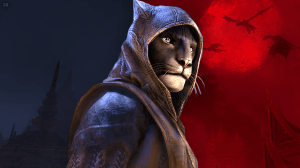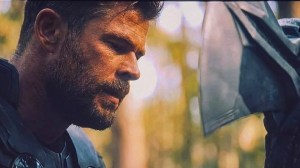
Writer Chip Zdarsky and artist Marco Checchetto have been steering Daredevil into new and unexpected territory in its sixth volume. While the new series has delivered on many familiar themes from the characters past—touching on violence, sin, temptation—how these strands are drawn together appears very new. Following the events of Daredevil #5, Matthew Murdock renounced his violent role as a superhero and has succeeded in withdrawing from his vigilante habits in order to focus on assisting Hell’s Kitchen in other ways, so far.
Videos by ComicBook.com
While any reader with a longview on the superhero genre knows that change is always an illusion given enough time, it appears that this change may have some significant staying power within the context of superhero comics. Zdarsky has explicitly stated that the Daredevil persona will be absent from the comic for some time. It has remained true through the series’ second arc “No Devils Only God,” with Murdock refusing to don his old gear and only a few civilians playing at the role with cheap costumes and possibly hockey pads. The series appears to be genuinely engaged with what it would mean to have a superhero who also adheres to a pacifist ideology or, at the very least, tries to do so.
There have been a number of pacifist superheroes in mainstream comics (read: Marvel and DC) over the years, but almost none with their own titles or any significant attention. Dove, of the Steve Ditko created duo Hawk & Dove, is the most famous and is always paired with a companion willing to wreak havoc on any enemies they might encounter. The question of what it would mean to be powerful, interventionist, and opposed to violence has never been thoroughly examined at these publishers. This new volume of Daredevil appears ready to alter that status quo and to do so in a fashion that is both exciting and meaningful.

Marvel Comics’ Devil
The choice to transform Daredevil in this fashion is no accident, either. There are few superheroes with as strong of a connection to the consequences of violence as Daredevil, excluding anti-heroes like Wolverine and The Punisher who generally appear unaffected by the wanton slaughters they carry out. Since Frank Miller came onto the original volume of Daredevil in the late 1970s, the character’s stories have maintained an interest in the gritty, visceral realities of action. The most famous moments stem from Daredevil #181 and #191, in which Elektra is brutally murdered in the streets by Bullseye and Daredevil subsequently allows Bullseye to fall towards his seeming death and total paralysis. These heightened moments often gave way to smaller stories, like the schoolyard shooting depicted in #191. Violence has maintained its real world consequences and lack of clarity since in runs by writers like Ann Nocenti, Brian Michael Bendis, and Ed Brubaker, yet Daredevil has continued to engage in his vigilante work in spite of some terrible consequences.
Importantly, these consequences have brought a sense of guilt across most of this history. Daredevil’s Catholicism is as integral to the character as his street level approach to fighting crime. In Daredevil #191 he is driven to visit Bullseye due to the guilt of inspiring a child to fight and shoot a classmate. Examples of this sort of guilt run rampant through the many volumes of Daredevil, making him an ideal character to grapple with the cost of violence and seeking alternatives.

The Cost of Violence
Violence is often not a binary choice, certainly not in the semi-accepted role of superhero that runs analogous to the work of soldiers and law enforcement within Marvel Comics. The first arc of Zdarsky and Checchetto’s Daredevil, “Know Fear,” captures this consideration very well as it pulls in other characters, who share similar powers and responsibilities as Daredevil, before he makes a choice to forego violence. Spider-Man, Luke Cage, Jessica Jones, and others all openly acknowledge what Daredevil learns in this first arc: Utilizing violence always bears costs, often unexpected and deadly ones. While Daredevil is grappling with the knowledge that a fight intended to subdue resulted in the death of another human being, all of his compatriots have already reconciled this element of their roles. They admit the cost and torment of taking another human life, even in the act of protecting others, and accept there is no way around those risks and consequences. It’s a pivotal moment and one that casts the question of using violence in stark terms.
Spider-Man discusses his own experiences with manslaughter at length, admitting that he (and all of his peers) have killed at one point. While he frames this issue personally as one that calls for more care and consideration to avoid doing too much harm, it is not the sort of negotiated stance that Daredevil is capable of possessing. Matthew Murdock’s worldview holds murder to be a mortal sin, one that can be forgiven but never justified. Accepting that acts of violence, even violence committed without the intention of crippling or killing others, will inevitably lead to chaotic outcomes like death means that the violence itself is unacceptable.
This realization is framed in darkness, as both Spider-Man and Daredevil speak in Matt’s home, with Daredevil admitting that he continued to push harder rather than acknowledge this truth. It’s what leads both his peers, like Spider-Man, and his priest to discourage him from going further. For the former, that means telling Daredevil he is “done.” For the latter, it means encouraging Matthew Murdock (not Daredevil) to do better and “cast out the devil.”

The Power of Peace
This dual-framing presents an opportunity, one that has only begun to be explored in the subsequent pages of Daredevil. It’s made clear from the words of Spider-Man and other heroes that Matthew cannot continue in his current role. The price of violence is too high and conflicts directly with his moral and religious beliefs, driving him even further into darkness. However, that does not exclude him from doing good, including doing good with the use of his powers. The subsequent story has begun to develop various ways in which a superpowered individual might be able to simultaneously serve the roles of pacifist and hero.
Daredevil has focused more on Matthew’s new career as a parole officer. Rather than using enhanced sense to return parolees to jail upon detecting a lie or other infraction, he uses his additional knowledge to steer them away from problems and an unfortunate return to incarceration. When moving through New York City, he has also taken up the role of an empowered protector both on accident and purpose. While at a dinner attacked by mob enforcers, he helps to warn and shield a family. Overhearing a story of a young man’s involvement with a gang, he seeks out and rescues that young man, receiving various blows in the process while refusing to strike back at his attackers.
All of this story has made it clear that the concept of a pacifist superhero is workable on multiple levels. There is the pure entertainment value of superhero comics, none of which has been diminished in a story that remains focused on various intrigues and altercations. However, on a much grander level, there is the metaphorical story of power that lies at the heart of all superhero comics. Daredevil has been a character who shows how power can be used in a retributive fashion since the 1970s, hurting criminals in a quest for justice. That power is being effectively put to use in a new fashion in these pages, continuing to pursue justice without ever seeking to harm another human being. That transition is more complex than simply refusing to strike others, it has also led Daredevil to protect a family with strong mob ties and dedicate his days to helping criminals rejoin society. The choice towards pacifism has not simply proven to be unexpectedly entertaining, it appears to be every bit as powerful as the brawls readers are used to. That choice and its consequences, the effort of making the world better without harming others, makes Daredevil a far more powerful character than he has been in the past and shows there’s room for a pacifist hero, even at Marvel Comics.








